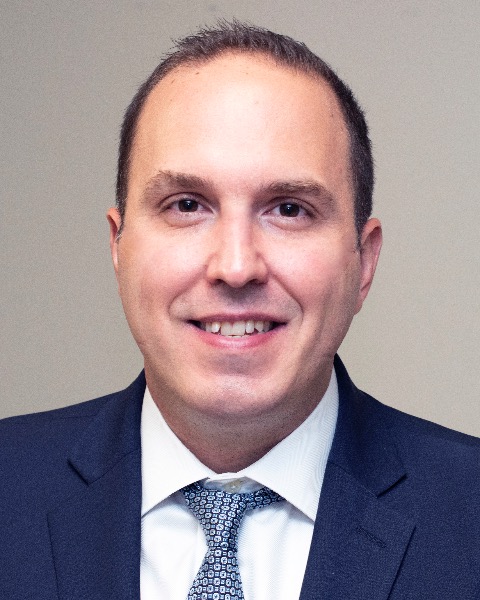Back
Endoscopy Video Forum
Annual Scientific Meeting
Session: Symposium 2C: 10th Annual Endoscopy Video Forum
V1 - Gallbladder to the Rescue: Transcystic Endoscopic Ultrasound-Guided Rendezvous
Monday, October 24, 2022
4:50 PM – 5:00 PM ET
Location: Richardson Ballroom AB

Ramzi Mulki, MD
University of Alabama at Birmingham
Birmingham, AL
Presenting Author - Endoscopy Video Forum(s)
Ramzi Mulki, MD1, Samuel Fernandez Prada, MD2, Antonio Martinez Ortega, MD2, Ramon Sanchez-Ocana, MD2, Carlos De la Serna Higuera, MD2, Manuel Perez-Miranda, MD2
1University of Alabama at Birmingham, Birmingham, AL; 2Universitay Hospital Rio Hortega, Valladolid, Castilla y Leon, Spain
Introduction: ERCP is the standard of care for preoperative biliary drainage in patients with distal malignant biliary obstruction. Unsuccessful ERCP is higher in malignant obstruction compared to benign. Traditional EUS-guided rendezvous (EUS-RV) via bile duct access may overcome this, however, may result in adverse events such as biliary leakage if unsuccessful. We present a case of failed ERCP and failed EUS-RV resulting in bile leakage, salvaged with transcystic rendezvous via gallbladder (GB) drainage.
Case Description/Methods: A 62-year-old female presented with painless jaundice (serum bilirubin=20mg/dL). CT revealed a large hypoenhancing pancreatic head mass. EUS-FNA confirmed pancreatic adenocarcinoma. ERCP was unsuccessful despite advanced cannulation techniques (double wire & precut). A 5fr x 5cm plastic pancreatic stent was placed. EUS-RV was performed by puncturing the common bile duct (CBD) using a 19G FNA needle and passing a 0.025” guidewire through it which was then retrieved via the working channel of a duodenoscope after scope exchange. A catheter was passed over the guidewire into the distal CBD, the wire was removed, and the catheter advanced into what was thought to be the proximal CBD. Contrast injection revealed large extravasation from the false passage of the hard end of the wire and catheter. Repeat attempts at intra- and extrahepatic EUS-RV were unsuccessful due to air artifact and duct decompression. A distended GB was imaged from the duodenum. Therefore, a cholecystoenterostomy was created using a 15 x 10mm lumen apposing metal stent (LAMS). After dilating the LAMS, an upper endoscope was advanced into the gallbladder. The cystic duct orifice was identified and cannulated with a catheter preloaded with a 0.035’ guidewire. The wire traversed the CBD into the duodenum where it was coiled. The endoscope was exchanged for a duodenoscope, and the guidewire retrieved. A second wire was advanced in parallel before removing the EUS-RV wire into the CBD across the stricture. Cholangiography confirmed access, a large leak in the mid CBD, and a distal CBD stricture. A 10x60-mm fully covered self-expandable metal stent was placed across stricture and leak. The patient recovered uneventfully and is expected to undergo neoadjuvant therapy followed by pancreaticoduodenectomy.
Discussion: The GB serves as an important salvage organ for failed EUS-RV, especially when EUS-RV is complicated by biliary leakage preventing further EUS-guided puncture of the bile duct.
Disclosures:
Ramzi Mulki, MD1, Samuel Fernandez Prada, MD2, Antonio Martinez Ortega, MD2, Ramon Sanchez-Ocana, MD2, Carlos De la Serna Higuera, MD2, Manuel Perez-Miranda, MD2, V1, Gallbladder to the Rescue: Transcystic Endoscopic Ultrasound-Guided Rendezvous, ACG 2022 Annual Scientific Meeting Abstracts. Charlotte, NC: American College of Gastroenterology.
1University of Alabama at Birmingham, Birmingham, AL; 2Universitay Hospital Rio Hortega, Valladolid, Castilla y Leon, Spain
Introduction: ERCP is the standard of care for preoperative biliary drainage in patients with distal malignant biliary obstruction. Unsuccessful ERCP is higher in malignant obstruction compared to benign. Traditional EUS-guided rendezvous (EUS-RV) via bile duct access may overcome this, however, may result in adverse events such as biliary leakage if unsuccessful. We present a case of failed ERCP and failed EUS-RV resulting in bile leakage, salvaged with transcystic rendezvous via gallbladder (GB) drainage.
Case Description/Methods: A 62-year-old female presented with painless jaundice (serum bilirubin=20mg/dL). CT revealed a large hypoenhancing pancreatic head mass. EUS-FNA confirmed pancreatic adenocarcinoma. ERCP was unsuccessful despite advanced cannulation techniques (double wire & precut). A 5fr x 5cm plastic pancreatic stent was placed. EUS-RV was performed by puncturing the common bile duct (CBD) using a 19G FNA needle and passing a 0.025” guidewire through it which was then retrieved via the working channel of a duodenoscope after scope exchange. A catheter was passed over the guidewire into the distal CBD, the wire was removed, and the catheter advanced into what was thought to be the proximal CBD. Contrast injection revealed large extravasation from the false passage of the hard end of the wire and catheter. Repeat attempts at intra- and extrahepatic EUS-RV were unsuccessful due to air artifact and duct decompression. A distended GB was imaged from the duodenum. Therefore, a cholecystoenterostomy was created using a 15 x 10mm lumen apposing metal stent (LAMS). After dilating the LAMS, an upper endoscope was advanced into the gallbladder. The cystic duct orifice was identified and cannulated with a catheter preloaded with a 0.035’ guidewire. The wire traversed the CBD into the duodenum where it was coiled. The endoscope was exchanged for a duodenoscope, and the guidewire retrieved. A second wire was advanced in parallel before removing the EUS-RV wire into the CBD across the stricture. Cholangiography confirmed access, a large leak in the mid CBD, and a distal CBD stricture. A 10x60-mm fully covered self-expandable metal stent was placed across stricture and leak. The patient recovered uneventfully and is expected to undergo neoadjuvant therapy followed by pancreaticoduodenectomy.
Discussion: The GB serves as an important salvage organ for failed EUS-RV, especially when EUS-RV is complicated by biliary leakage preventing further EUS-guided puncture of the bile duct.
Disclosures:
Ramzi Mulki indicated no relevant financial relationships.
Samuel Fernandez Prada indicated no relevant financial relationships.
Antonio Martinez Ortega indicated no relevant financial relationships.
Ramon Sanchez-Ocana indicated no relevant financial relationships.
Carlos De la Serna Higuera indicated no relevant financial relationships.
Manuel Perez-Miranda: Boston Scientific – Consultant. Lumendi – Consultant. M.I.Tech – Consultant. Medtronic – Consultant. Olympus – Consultant.
Ramzi Mulki, MD1, Samuel Fernandez Prada, MD2, Antonio Martinez Ortega, MD2, Ramon Sanchez-Ocana, MD2, Carlos De la Serna Higuera, MD2, Manuel Perez-Miranda, MD2, V1, Gallbladder to the Rescue: Transcystic Endoscopic Ultrasound-Guided Rendezvous, ACG 2022 Annual Scientific Meeting Abstracts. Charlotte, NC: American College of Gastroenterology.

